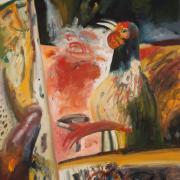
REVIEWED BY RHYS FULLERTON
From the moment you step through the doors of the Open Eye Gallery this month, you know you’re about to witness something special.
John Bellany (1942–2013) was a hugely talented and creative person, something reflected in the fact that this is the first time the gallery has dedicated an exhibition entirely to one artist.
The works on display have been selected by Helen Bellany, the artist’s lifelong muse and inspiration, and take us on a personal journey through key works from the family collection.
One of the first that greets us is ‘Capercaillie Sings’ (1984) – a gentle introduction to Bellany’s colourful and expressive style. The capercaillie doesn’t just sing, it bursts into life through colourful and dramatic brushstrokes.
Not all of Bellany’s work is as gentle as this. I’d describe the majority of his output as like being in a dream that’s not quite a nightmare but is very strange and often surreal. The works are full of wonderful recurring characters. They are often dark, but they are never overshadowed by mood.
I can’t quite put my finger on why, but 'Stella Maris' (1985) is one of my personal favourites on display. It might be because of the unlikely double act who take centre stage, or perhaps it’s because of the fantastic blue sky.
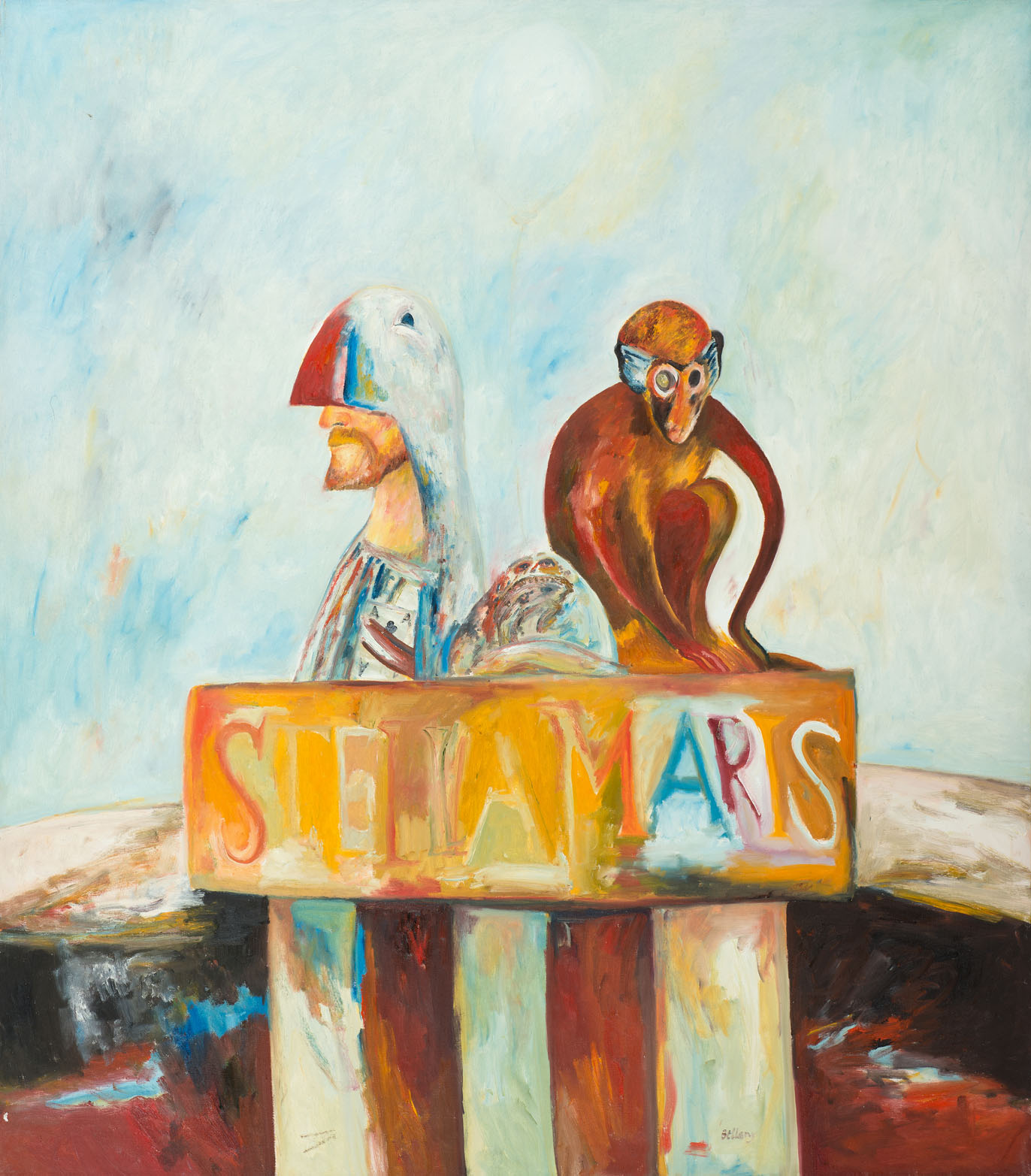
Going by the title, 'Self Portrait with Dog' (1974) should be a simple painting, but it left me with lots of questions. Where is the Bellany? Is he the cloaked person with his back to us? Or is he in the painting of the man with a puffin mask? Perhaps he is the frail figure in the painting to the right? The dog on the other hand is very clear and looks as if it will jump out of the painting if you get too close.
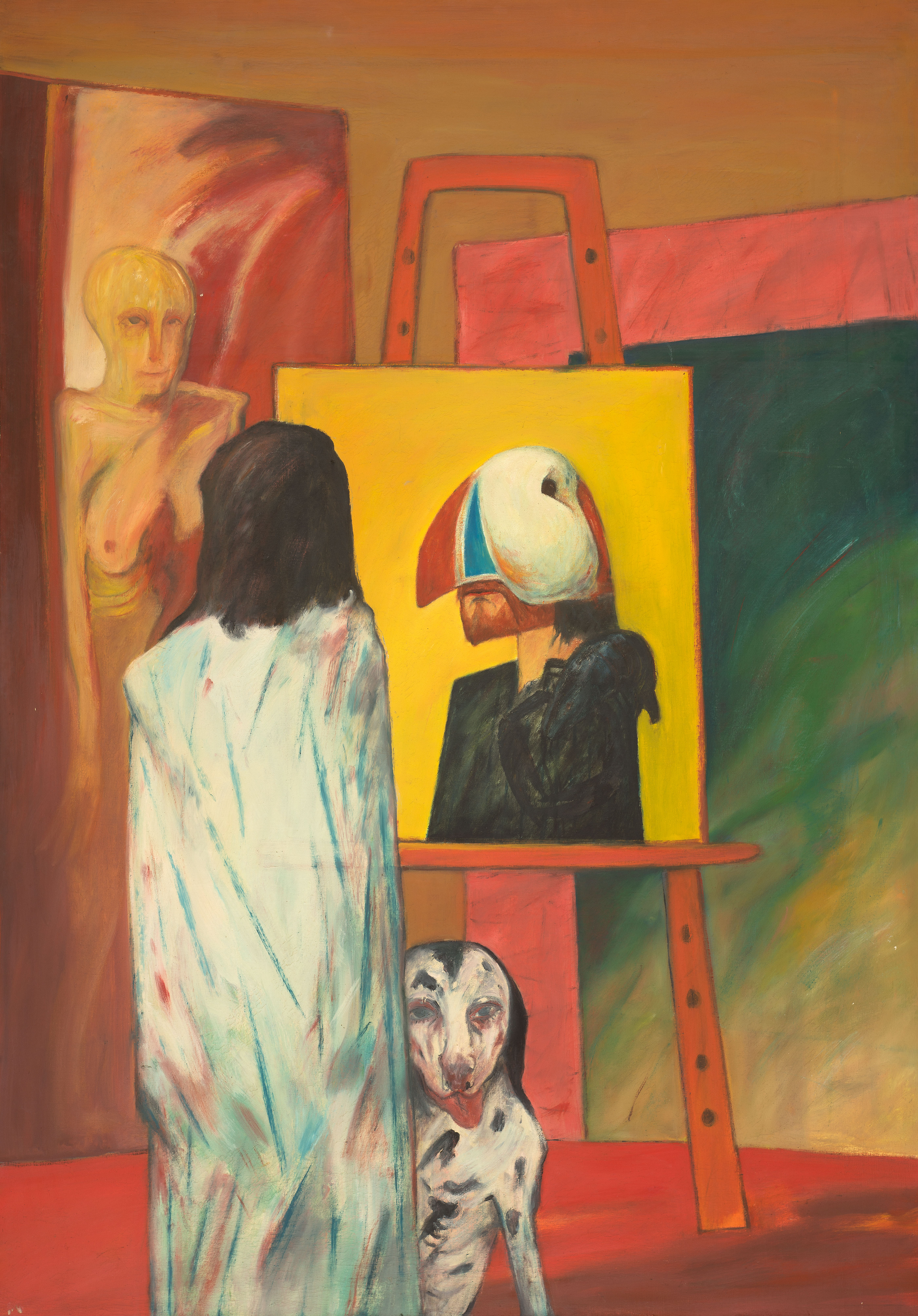
Bellany’s drawings, prints and etchings give us a glimpse into his methods. Underneath the often chaotic paintings is methodical thinking with structure and planning. Seeing the bare bones or beginning of a work provides a wonderful insight.
These etchings aren’t just plans, they are works in their own right and 'Time Will Tell' (1980), for example, proves this. The shaded foreground gives this surreal etching a very dark undertone, and it’s as if it was meant to be black and white all along. The minimalist or incomplete approach to 'The Sad Pianist' (1983) makes it very sad indeed, and in my opinion any colour would have spoiled it.
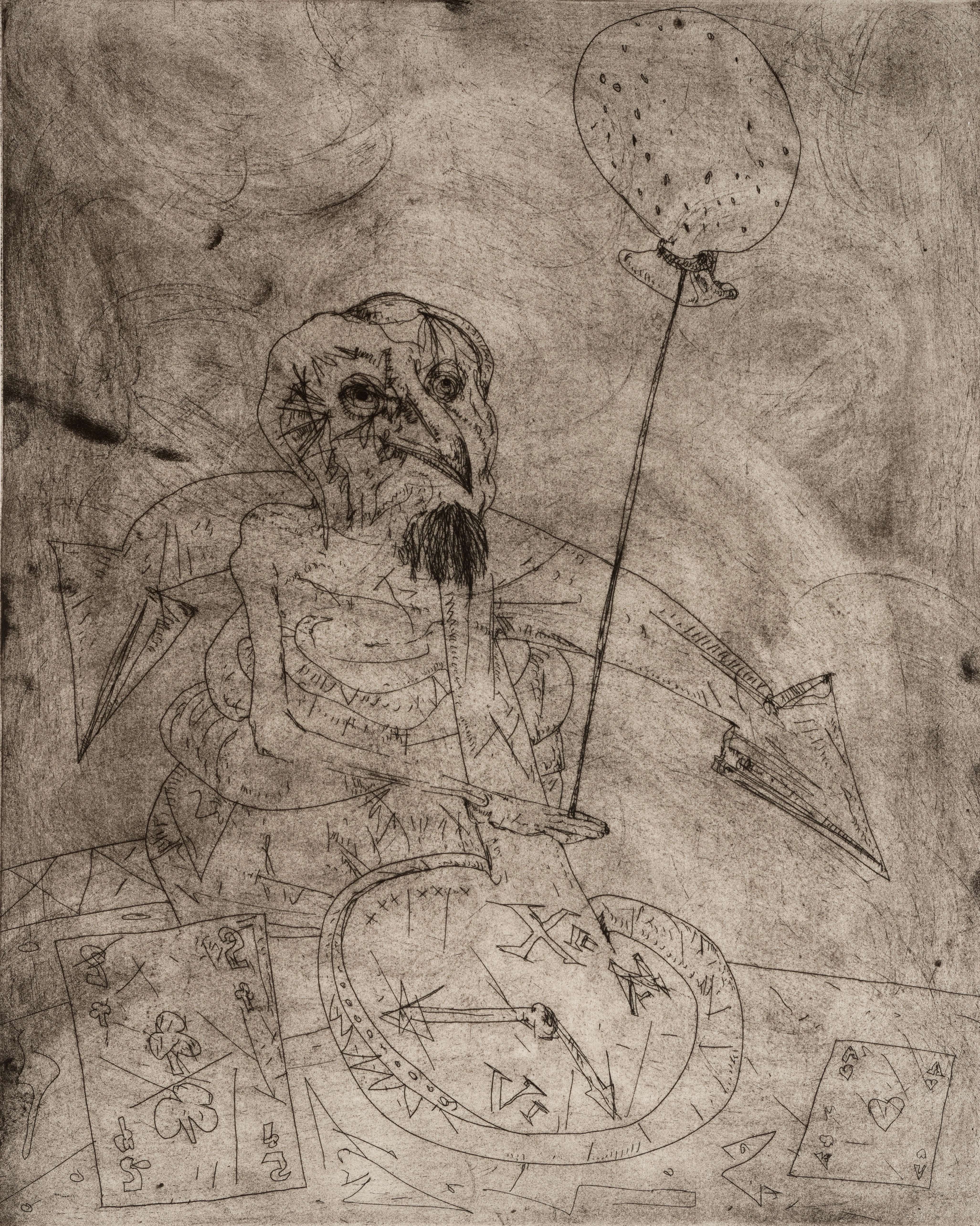
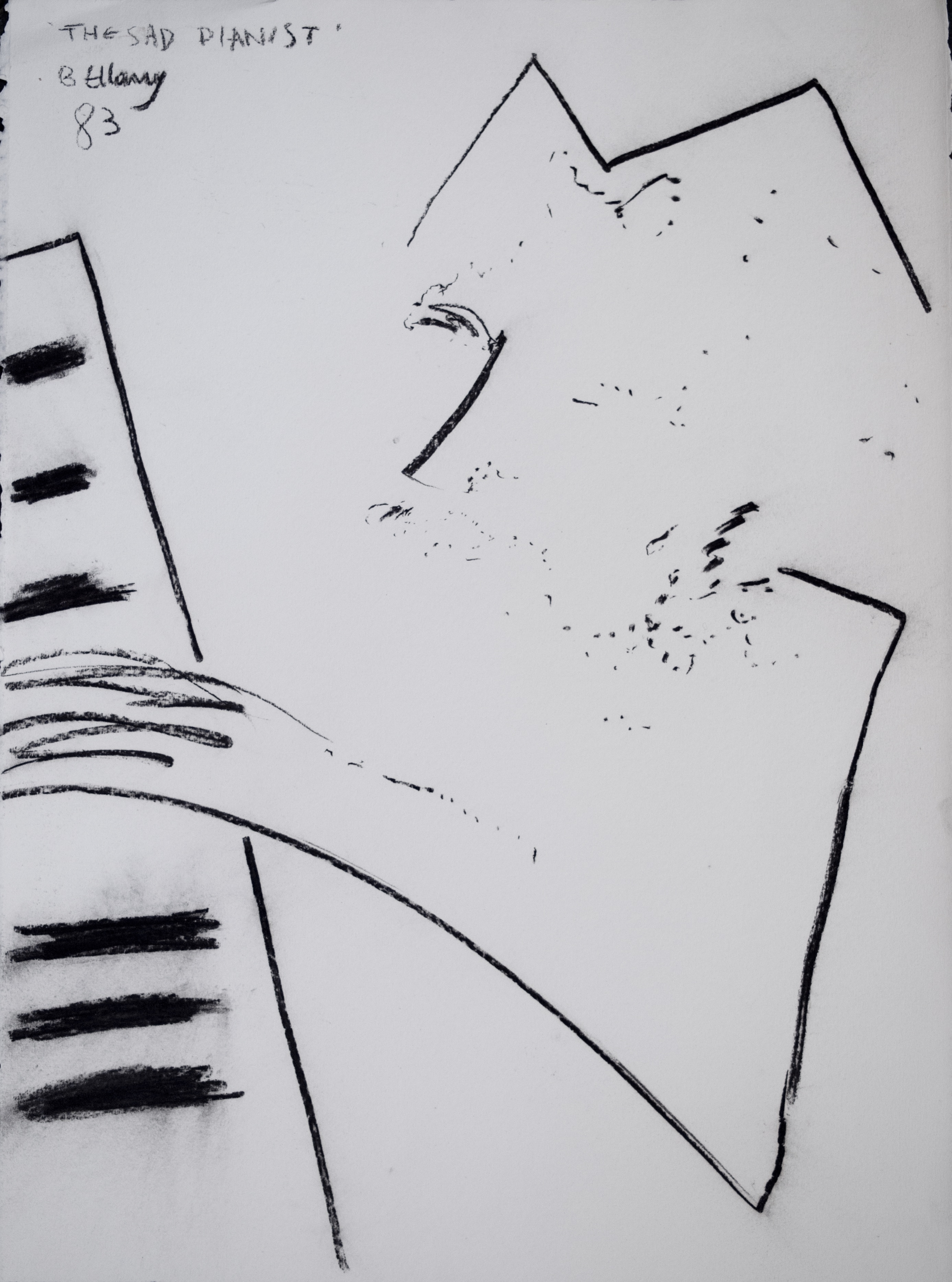
The few glimpses we get of Bellany playing it safe with a more simple painting are just as satisfying as his works with the array of characters. 'Capercaillie Sings' is one of these, as is 'To the Lighthouse' (1986). The kaleidoscopic and busy sky is brought to life with a wonderful colour palette, and Bellany makes a simple setting extremely fantastical and compelling.
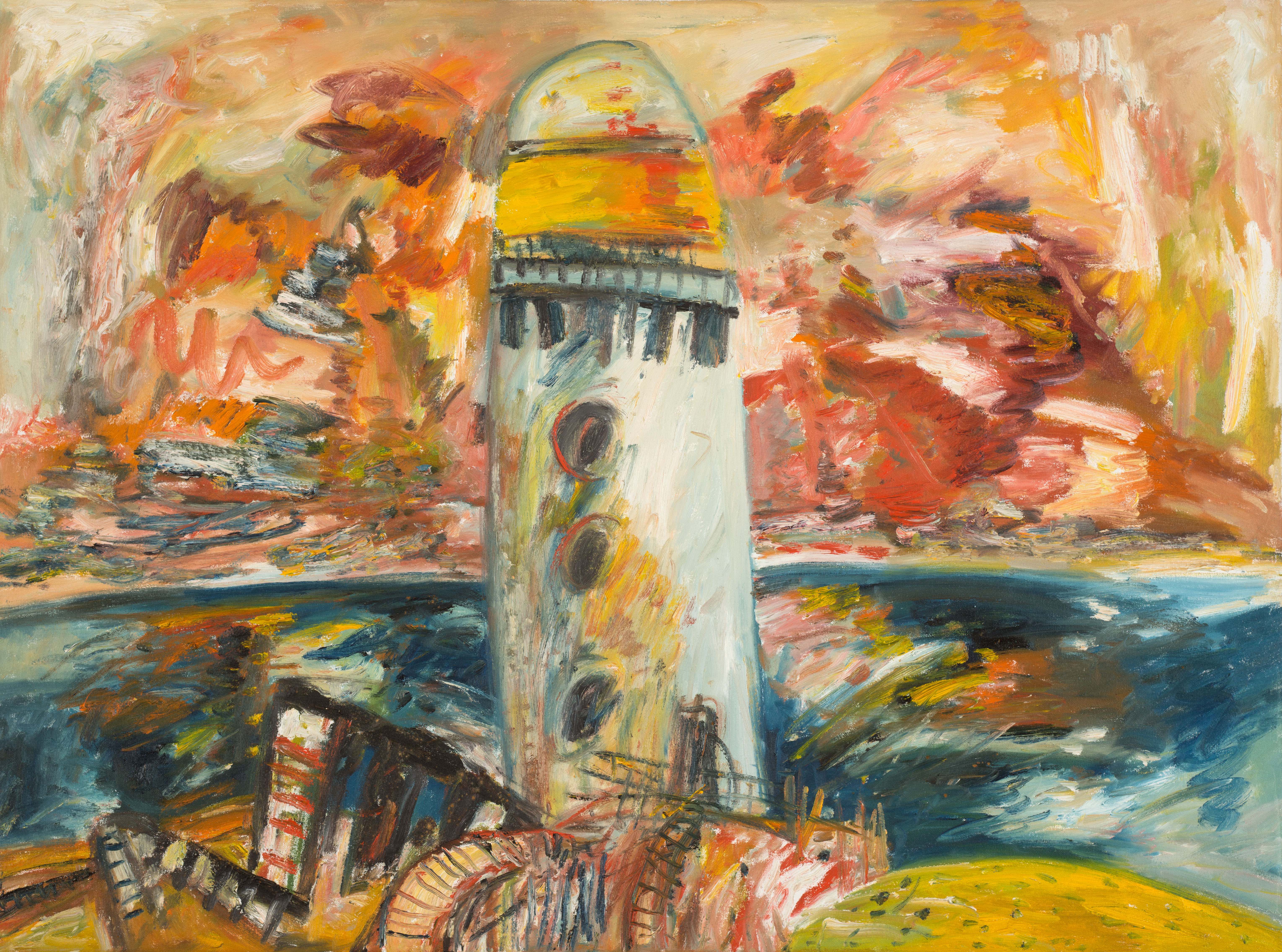
In 'To the Lighthouse', he seems to be revisiting the scene below in 'Celtic Lovers Reunited' (1985). I can’t help but wonder why he decided to paint this scene again without the ‘Celtic Lovers’, but I’m glad he did as it certainly shows another side to him.
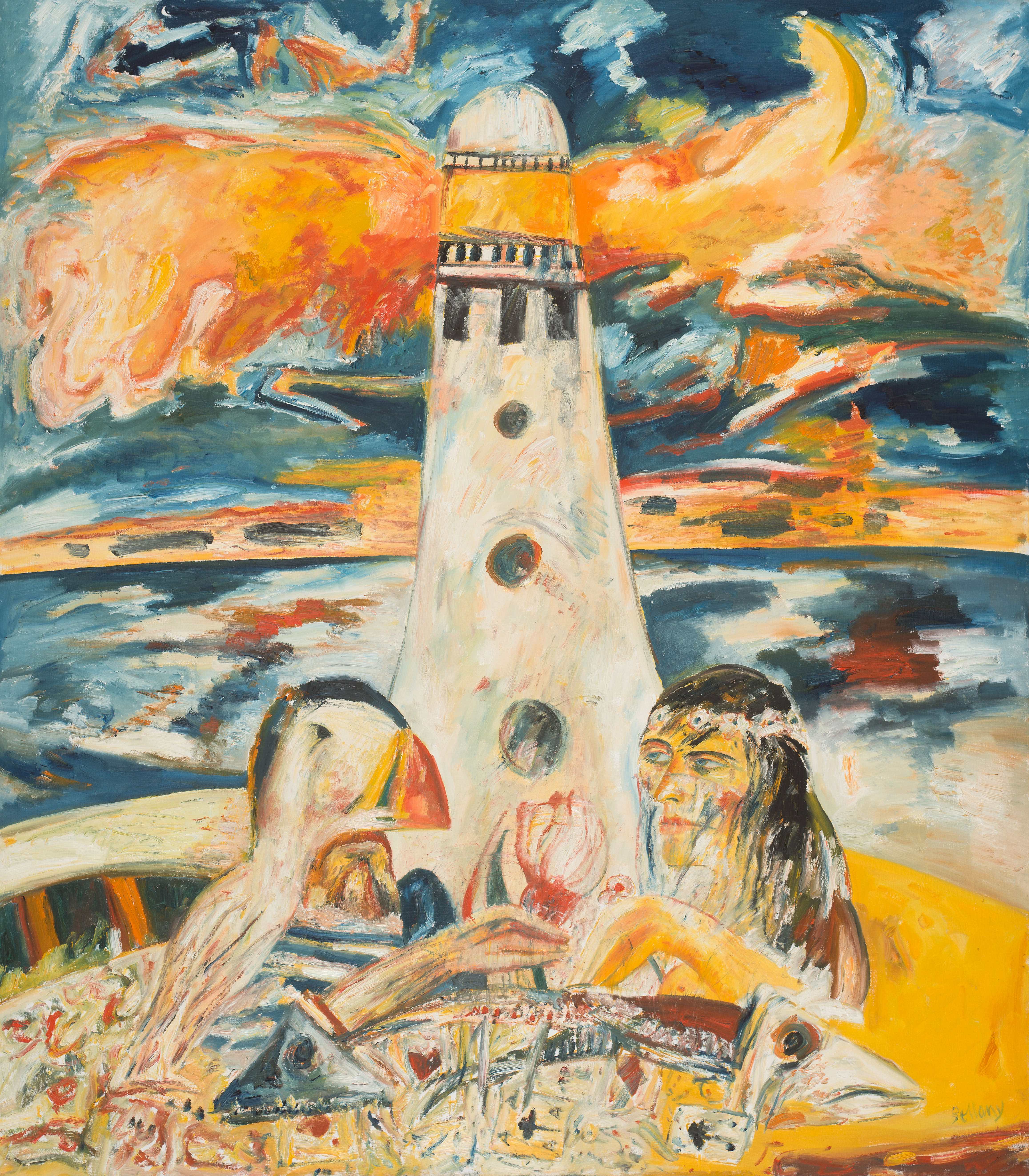
Finally, the star of the show and a must-see this summer is 'A Long Night’s Journey into Day' (1987). This painting takes up most of the wall, and has so many layers to it that you could stare at it for hours and keep noticing new colours, characters and details.
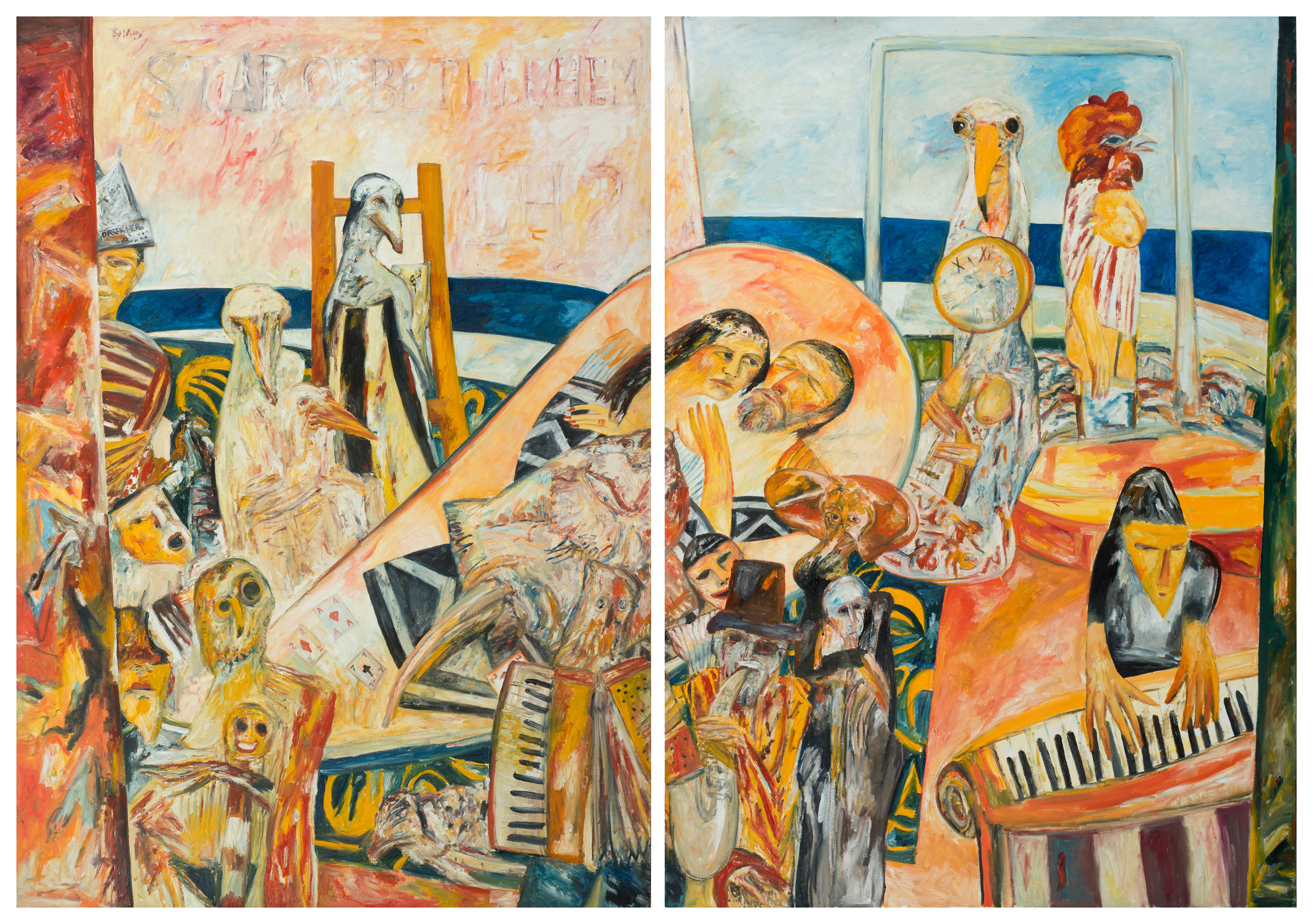
It’s as if the darkness has infiltrated the day, like an over-run Halloween party where the guests stay forever. In 1987, Bellany had survived a near fatal liver disease, and Helen Bellaney says in the gallery brochure that this painting pays tribute to the life returned to him. This is a beautiful and powerful work, and despite its dark tones, it is full of life.
This exhibition should not be missed by those who like Bellany’s work already, or by those who know nothing about him. Catch it while you can as it does not disappoint.
John Bellany: The Capercaillie’s Song continues at the Open Eye Gallery until Wednesday 2 September. Admission free.